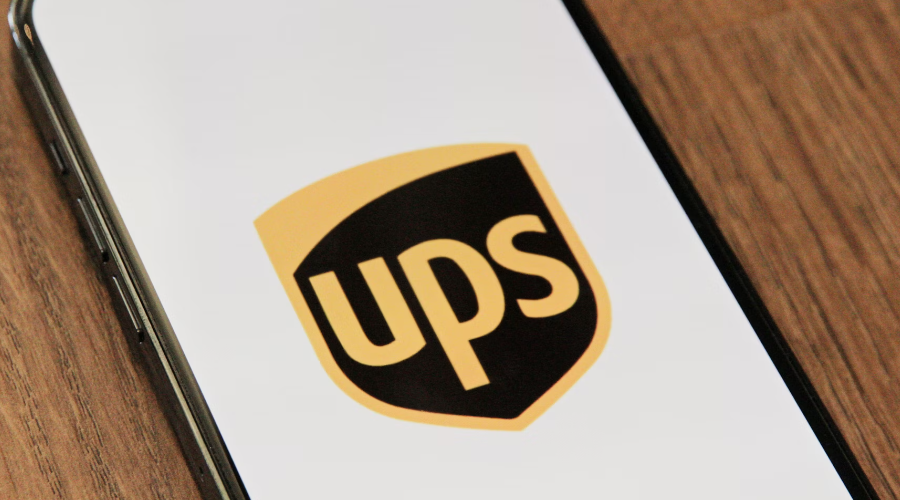Table of Contents
Differences Between EMS, DHL, UPS, USPS, FedEx, and TNT
Time: Apr 15,2025 Author: SFC Source: www.sendfromchina.com
If you run an online store, shipping is a big part of your work. Picking the right delivery company can help your business grow. It can also save you money and make your customers happy. But with so many choices like EMS, DHL, UPS, USPS, FedEx, and TNT, it can be hard to know which one to use.Each of these couriers is different. Some are better for sending packages fast. Others are good for sending to other countries. Some cost less. If you know what each one offers, you can make better choices for your shop.
Our blog will show you what makes each courier different. You will learn which one is best for your type of business, what they do well, and where they may not work as well. This guide is here to help you send your products in the best way.

1. Why Understanding Differences Between Couriers Matters?
Picking the right shipping service impacts costs, speed, and reliability. Cheaper options like USPS or EMS save money but may lack tracking. Premium carriers (DHL, FedEx) ensure fast delivery but cost more. Customs clearance varies—DHL/FedEx excel globally, while EMS faces delays. Heavy packages? UPS and FedEx handle them best. Restricted items? EMS is more lenient. Poor courier choice leads to late deliveries, lost packages, or extra fees. For businesses, the wrong carrier means unhappy customers. Knowing these differences helps you balance budget, speed, and reliability—avoiding headaches and ensuring smooth shipping every time.2. EMS
Operated by national postal services (e.g., USPS in the U.S.), EMS is a cost-effective solution for international shipments. It is part of a group called the Universal Postal Union (UPU). EMS is particularly favored for small packages under 21 kg and sensitive items like cosmetics or electronics due to lenient restrictions. However, its tracking updates are less frequent compared to commercial carriers, and delivery times can vary widely (5–30 days).Strengths:
- Found in over 190 countries.
- Low international prices.
- Sent through local post offices (like Japan Post, China Post).
Limitations:
- Slower than private companies.
- Tracking is not always detailed.
- Help from customer service depends on the country.
Best for: Small sellers who send lower-priced items to other countries, especially in Asia.
3. DHL
A global leader founded in 1969, DHL dominates in speed and reliability, especially for European and Asian routes. Its network spans 220+ countries, with specialized services for perishables and high-value goods. DHL’s pricing is premium, but its real-time tracking and customs efficiency justify the cost for time-sensitive shipments.Strengths:
- Fast and reliable international shipping.
- Great tracking and support.
- Good at handling customs.
Limitations:
- It can cost more than others.
- Does not deliver much inside the U.S.
Best for: Sellers who need fast and safe international delivery. Stores that ship higher-value items.
4. UPS

Strengths:
- Good delivery system in the U.S.
- Ships on time.
- Offers many business tools (like returns and storage).
Limitations:
- Price is high for international or light packages.
- Charges extra for fuel and remote areas.
Best for: U.S. sellers who send many packages or run big shops.
5. USPS

Strengths:
- Cheap for small packages.
- Sends to many places in the U.S.
- No extra charge for fuel or homes.
Limitations:
- Tracking is basic.
- Slower than private companies.
- Help for international shipping is not always good.
Best for: U.S. sellers with small, light packages. Also good for cheap shipping to other countries.
6. FedEx

Strengths:
- Good for overnight and on-time shipping.
- Great tracking and support.
- Offers strong business shipping help.
Limitations:
- Costs more than USPS for small boxes.
- Adds fees for some services.
Best for: Shops that need fast, trusted shipping with good service.
7. TNT (Now Part of FedEx)
Before its acquisition by FedEx in 2016, TNT was a powerhouse in European and Middle Eastern markets, known for superior customs clearance. While its brand has largely merged into FedEx, legacy TNT services still benefit from FedEx’s infrastructure, particularly for palletized freight.Strengths:
- Strong network in Europe.
- Good ground shipping.
- Good for sending papers and for business use.
Limitations:
- Service changed after joining FedEx.
- Not strong in all parts of the world.
Best for: Sellers in Europe or businesses that ship inside Europe.
8. A Detailed Chart
Here is a comparison chart for the differences between EMS, DHL, UPS, USPS, FedEx, and TNT:Courier |
Strengths | Weaknesses | Best Use Case |
|---|---|---|---|
EMS |
Cheap international shipping | Slower and less tracking | Budget-friendly cross-border shipping |
DHL |
Fast and reliable worldwide | Higher price | Expensive or time-sensitive items |
UPS |
Strong in U.S., full service | High cost for overseas | Bulk or big U.S. orders |
USPS |
Cheap small packages in U.S. | Simple tracking | U.S. small business shipping |
FedEx |
Fast and on-time shipping | Extra fees | Trusted fast shipping |
TNT |
Strong in Europe | Limited outside Europe | B2B shipping in Europe |
9. Conclusion
Each shipping company has good and bad points. Some are fast. Some cost less. Some are better for local delivery. Others are good for sending items across the world. Your choice depends on what your business needs.Think about the size of your package, where it is going, how fast it needs to get there, and how much you can spend. Picking the right courier can help your business grow and keep your customers happy.
10. FAQs
1. Which courier is best for international shipping?
DHL and FedEx are very good for global shipping because they are fast and dependable.2. Is USPS or UPS cheaper for small packages?
USPS is usually cheaper for small and light packages.3. What courier should I use for European deliveries?
TNT is good in Europe. DHL also works well there.4. Can I use multiple couriers in my ecommerce business?
Yes. Many sellers use more than one courier based on the order and where it is going.5. Is EMS reliable for ecommerce?
Yes, for cheap cross-border shipping. But it is not the fastest and tracking is simple. Post Views:32
Post Views:32
Copyright statement: The copyright of this article belongs to the original author. Please indicate the source for reprinting.
Previous Post
Next Post
Digital Logistics vs. Traditional Logistics: A Comprehensive Comparison
TAGS
Hot Research
Get a Custom China Fulfillment Solution with FREE Storage for 30 Days
 Want to know about our services, fees or receive a custom quote?
Want to know about our services, fees or receive a custom quote?
 Please fill out the form on the right and we will get back to you within a business day.
Please fill out the form on the right and we will get back to you within a business day.
 The more information you provide, the better our initial response
will be.
The more information you provide, the better our initial response
will be.





 TAGS:
TAGS: